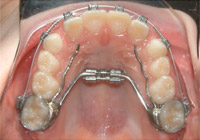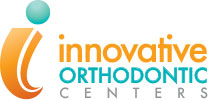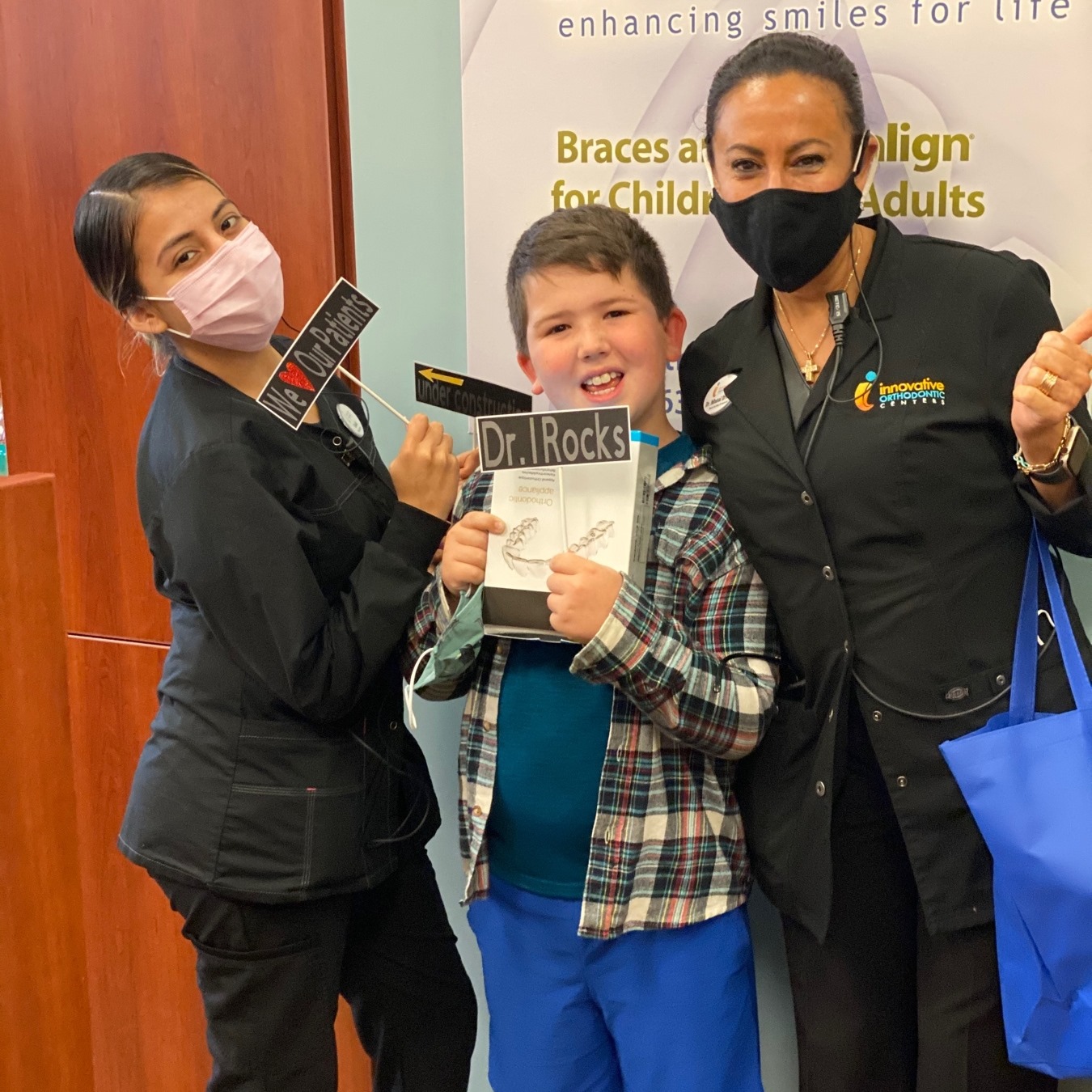Dr. Manal Ibrahim and Dr. Christine Gin are both certified specialists in orthodontics and dentofacial orthopedics. As board-certified orthodontists, you probably know that they’re experts in using appliances, such as braces and Invisalign®, to straighten teeth and help patients’ achieve functional bites. What you may not be familiar with is the term dentofacial orthopedics. What is dentofacial orthopedics and how does that factor into what Dr. Ibrahim and Dr. Gin do at Innovative Orthodontic Centers? Well, we’re explaining everything you need to know.
Orthodontics and Dentofacial Orthopedics: A Dental Speciality
When a dentist completes dental school, they receive a doctorate degree and are able to work as a general dentist and treat patients right away. However, other dentists decide to pursue a speciality. Becoming a specialist entails two to three more years of training in a residency program. The American Dental Association recognizes a range of specialities, including dental anesthesiology, prosthodontics, endodontics, pediatric dentistry, periodontics, orofacial pain, and, of course, orthodontics and dentofacial orthopedics, among others.
According to the National Commission on Recognition of Dental Specialities and Certifying Boards, “Orthodontics and dentofacial orthopedics is the dental speciality that includes the diagnosis, prevention, interception, and correction of malocclusion, as well as neuromuscular and skeletal abnormalities of the developing or mature orofacial structures.”
So, this is what Dr. Ibrahim and Dr. Gin learned in their residencies after dental school? Actually, both of our orthodontists took a unique path to their current specialities. After dental school, Dr. Ibrahim completed speciality training in prosthodontics and practiced prosthetic, implant, aesthetic and restorative dentistry for almost 10 years before going back to school to do another residency program in orthodontics and dentofacial orthopedics. Dr. Gin also did two separate residencies and is a specialist in both orthodontics and dentofacial orthopedics and orofacial pain. This multi-disciplinary training gives them a unique, holistic perspective on treating patients.
What is Dentofacial Orthopedics?

Dentofacial orthopedics is often part of a two-phase treatment plan. For example, if a young patient has a narrow upper jaw and the permanent teeth won’t be able to fit, which will lead to crowding, we can use an orthodontic expander during phase 1 treatment. An orthodontic expander is an appliance that widens the jaw, allowing all of the teeth to erupt properly. After a resting period, and once the permanent teeth are all in, we can then begin phase 2 orthodontic treatment and straighten the teeth with braces or Invisalign Teen.
While sometimes dentofacial orthopedics comes before orthodontic treatment, such as in the example of the orthodontic expander we mentioned, many times, they occur simultaneously. We may use an appliance in conjunction with Invisalign or braces for kids, so your child would actually be undergoing both dentofacial orthopedic and orthodontic treatment.
Reimagining Dentofacial Orthopedics and Phase 1 Orthodontics
At Innovative Orthodontic Centers, we take a high-tech approach and use the latest techniques and proven technology in order to give patients better results more comfortably and efficiently. In the past, dentofacial orthopedics often meant using braces for kids along with headgear and other cumbersome, bulky appliances. That’s not the case at our practice. In fact, we don’t use headgear at all.
One innovation that has allowed us to bypass metal appliances, including headgear, is Invisalign with Mandibular Advancement (MA). Invisalign with MA is the first type of clear aligners that are FDA-approved for treating class II malocclusion, or an overbite.
The aligners have wings that hold the lower jaw (mandible) in a forward (advanced) position. The lower jaw shifts forward incrementally and grows to the same size as the upper jaw. This guidance of jaw growth is dentofacial orthopedics. However, what’s unique is that at the same time the jaw is being manipulated, the aligners are also aligning and leveling the teeth, which is the orthodontic component. Using this type of Invisalign for kids and teens with an overbite has eliminated the need for separate orthopedic appliances in some cases. If you look at Invisalign overbite before and after photos, you’ll see a dramatic difference.
In addition to offering Invisalign for overbite correction, we’re also one of the few practices to offer Invisalign First, which is Invisalign for young patients who still have primary teeth. Traditionally, dentofacial orthopedics involved appliances and/or phase 1 braces for children. Now, we can achieve amazing results without using braces at all. Invisalign First can be used for phase 1 orthodontic treatment with other appliances or, depending on the problem we’re addressing, on its own since SmartForce® and SmartStage® technology not only allow us to align the teeth, but also support arch development.
Aside from Invisalign for kids, we use a variety of other cutting-edge appliances for orthopedic correction, such as the Dynaflex CS5™ and the Herbst appliance, which can be combined with braces or Invisalign. If you do opt for braces for your child, our self-ligating braces are smaller and more comfortable and paired with SureSmile ® prescription braces wires. The custom wires are robotically bent for maximum precision and efficiency and less discomfort.
Who is a Candidate for Dentofacial Orthopedics?
Children are typically the best candidates for dentofacial orthopedics. This is because their jaws are still growing and we can use appliances to alter the shape and size of the bones. Adults’ bones are no longer developing and have hardened, making it much more difficult to manipulate them. In some severe cases, surgical orthodontics might be recommended, where we combine corrective jaw surgery with braces or Invisalign in order to correct imbalances in the jaw and facial structure, while also straightening the teeth. However, the good news is, at Innovative Orthodontic Centers, we’re known for treating complex bite issues without jaw surgery, so there are options for our adult orthodontics patients.
Regardless, this does highlight the importance of scheduling a child’s first orthodontic evaluation by age seven. At this age, kids still have most of their primary teeth and, if we spot certain red flags, we can more easily intercept or prevent issues using dentofacial orthopedics and orthodontics. Overall treatment will be easier, faster and more affordable, and the results will be stable and last a lifetime. For some types of bite issues, early evaluation and treatment with dentofacial orthopedics will prevent the need for jaw surgery.
To learn more about dentofacial orthopedics in Naperville or Shorewood or to see if your child could benefit from treatment, schedule a complimentary consultation at Innovative Orthodontic Centers today!





